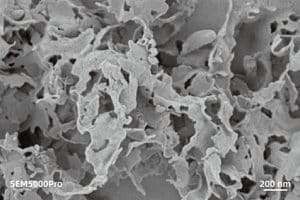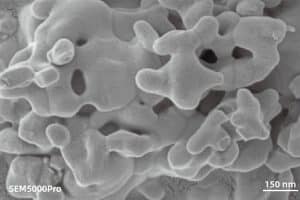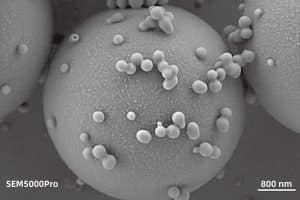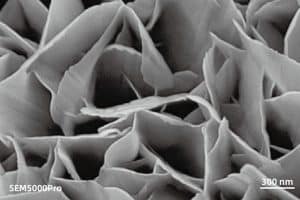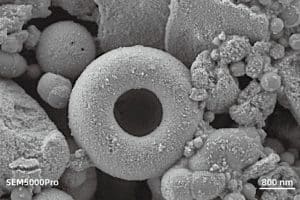The CIQTEK SEM5000Pro is a Schottky field emission scanning electron microscope (FE-SEM) specialized at high resolution even under low excitation voltage. Employing an advanced “Super-Tunnel” electron optics technology facilitates a crossover-free beam path together with an electrostatic-electromagnetic compound lens design.
These advancements reduce spatial charging effect, minimize lens aberrations, enhance imaging resolution at low voltage, and achieve a resolution of 1.2 nm at 1 kV, which allows for direct observation of non-conductive or semi-conductive samples, effectively reducing sample irradiation damage.
★ “Super Tunnel” electron optics column technology/in-lens beam deceleration
Decrease spatial charging effect, ensuring low voltage resolution.
★ Crossover-free in the electron beam path
Effectively reduce lens aberrations and improve resolution.
★ Electromagnetic & electrostatic compound objective lens
Reduce aberrations, significantly improve resolution at low voltages, and enable observation of magnetic samples.
★ Water-cooled constant-temperature objective lens
Ensure the stability, reliability, and repeatability of the objective lens operation.
★ Variable multi-hole aperture with electromagnetic beam deflection system
Automatic switching between apertures without mechanical motion, allowing fast switching between imaging modes.
Characterization of iridophores in lizard skin cells, using the STEM detector in the CIQTEK SEM5000Pro FE-SEM.
Animal colors in nature can be classified into two categories based on their formation mechanisms: pigment colors and structural colors.
Pigment colors are achieved through variations in pigment composition and the overlapping of colors, similar to the principles of “primary colors.”
Structural colors, on the other hand, are generated through the reflection of light of different wavelengths by intricate physiological structures, based primarily on principles of optics. Iridophores, found in lizard skin cells, possess structures similar to diffraction gratings. We refer to these structures as “crystalline plates.” Crystalline plates can reflect and scatter light of different wavelengths. Studies have shown that by varying the size, spacing, and angle of the crystalline plates in lizard iridophores, the wavelengths of light scattered and reflected by their skin can be altered. This finding is significant for understanding the mechanisms behind color change in lizard skin.

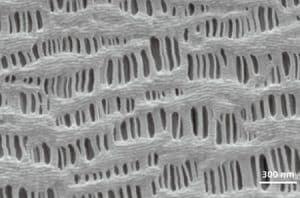
*optional
